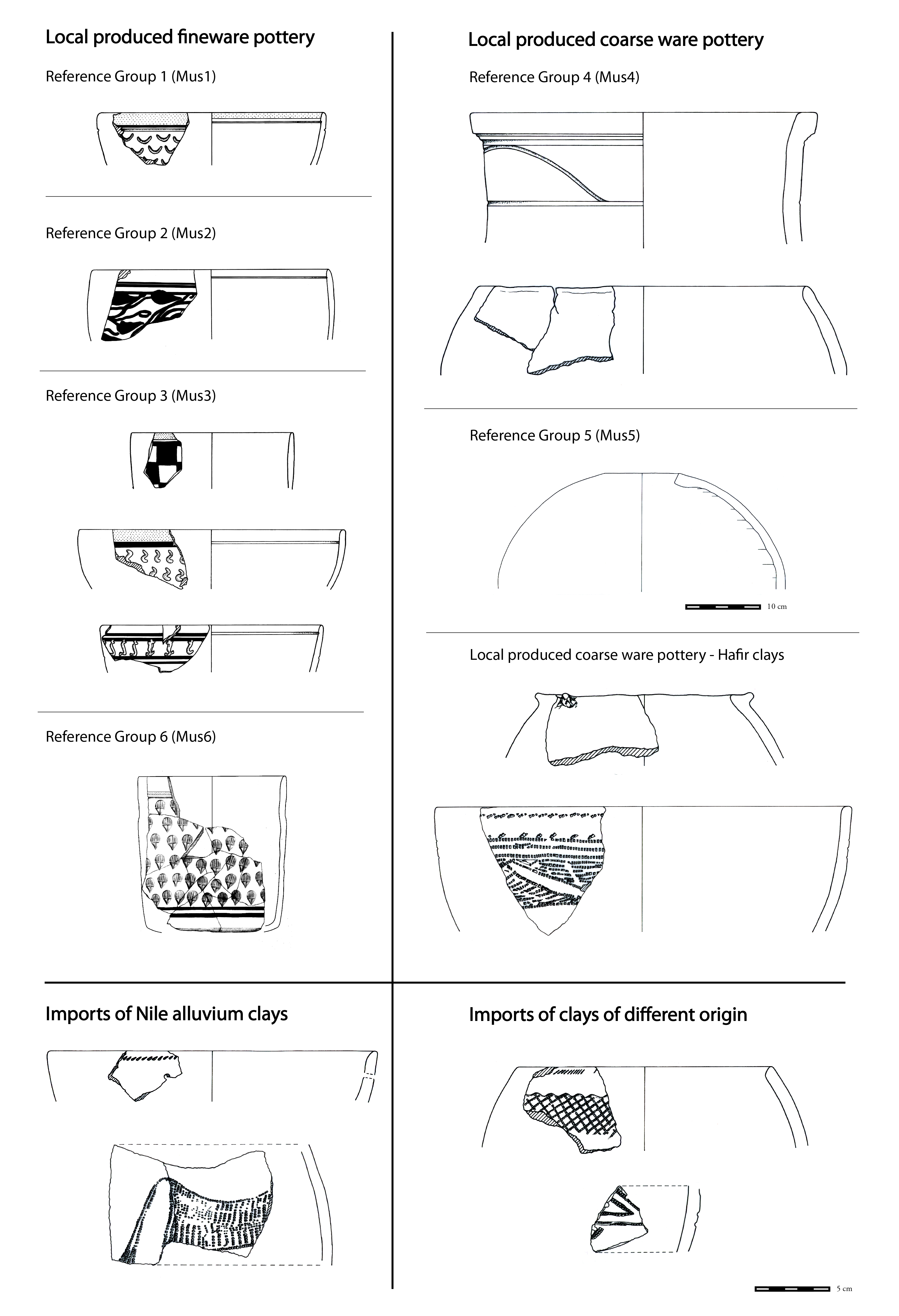This project examines the production, distribution and consumption of pottery in Ancient Sudan using the data recovered from a production site at Musawwarat es-Sufra.
Research
The discovery of the remnants of a pottery workshop in the Great Enclosure, a sacral complex at Musawwarat es-Sufra (cf. research project (A-1-1) The transformation of space by knowledge), presented a unique opportunity to study pottery production in the Meroitic period (3rd century BC to 4th century AD) at a highly detailed level. Based on the results of current excavations, the project looks at the extent and the organization of production, the procurement of raw materials, technological processes and manufacturing techniques, the development and application of technical knowledge as well as the distribution and use of pottery in this context.
The ceramic corpus which forms the core of the research comprises c. 27,500 sherds with a total weight of c. 1000 kg. This material derives mainly from a large dump in the workshop area. It is composed of c. 91 percent coarse wares, 8 percent finewares and less than 1 percent handmade wares. The data obtained in the archaeological investigations (cf. research project (A-1-1) The transformation of space by knowledge) indicate that pottery production at the site may have started in the 1st century BC and continued into the 1st and possibly 2nd centuries AD. Characteristic changes in material composition and style of decoration of some of the locally produced fine wares point to changes within the workshop organization and/or different episodes of pottery production and may be of chronological relevance.
The study of the pottery was accompanied by extensive archaeometric analyses (MGR, WD-XRF, XRD, thin section, SEM) as well as technological analyses (determination of original firing temperatures using KH-analysis), and analyses of physical ceramic properties (apparent density, open porosity, water absorption) and functional properties (water permeability, thermal shock resistance; all undertaken by M. Daszkiewicz and G. Schneider, in cooperation with Warzaw University of Technology). They confirmed that almost all fine wares and most wheel-made coarse wares were made from ceramic bodies of similar chemical and mineralogical composition and can be associated with local production. The vessels were produced using different sources of clays (wadi clays, hafir clays) which were available in the vicinity of the site. In contrast, the handmade coarse wares (with the exception of two fabrics which are made from local raw materials) are produced from non-local raw materials and can be classified as imported to the site. Apart from this special group, only very few sherds are of non-local origin. Vice versa, comparison with data from other sites indicates that the pottery from Musawwarat was not regularly distributed. Thus it can be concluded that the workshop primarily produced for and met the needs of on-site consumption.
A regional raw material survey allowed the identification of potential raw material sources and formed the basis for studying processes of raw material procurement and use. The analysis of the installations at the site, which include a room where a potter’s wheel had been found in previous excavations, allow the study of spatial aspects of the production processes. This is supplemented by a rich corpus of small finds, including a varied range of production debris, stamps for decorating fine ware pottery and the potter´s wheel. In sum, this part of the research provides the most detailed study of Meroitic pottery production undertaken so far and will allow to establish a chaîne opératoire at workshop level. To shed further light on individual questions arising from this work, research has systematically been expanded to include the geophysical and archaeological investigation of surrounding locales, experimental studies and ethnoarchaeological investigations into current practices of pottery making and its technological parameters.
Typological analysis based on vessel forms, the use of specific fabrics and the employment of specific decorations aim at establishing potential patterns of use with regard to the functions present at the site. Again this part of the research is advanced through archaeometric analyses of the functional properties of the locally produced pottery. This indicated that in order to make vessels impermeable, surfaces of most finewares and some corse wares were treated, e.g. coated with slip/color or polished/burnished. To improve mechanical properties of ceramics made from wadi clays, they were tempered with kaolinitic raw materials and fired at high temperatures (c. 1000 °C). In contrast, ceramics made from clays obtained from local water reservoirs (hafirs) were tempered with dung and display the same mechanical properties when fired at lower temperatures (700-800 °C).
Since no pottery kilns were identified at the site despite intensive investigations, a series of firing experiments was undertaken to learn whether the pottery from the workshop could have been produced in open bonfires. The results were positive. Together with ethnoarchaeological investigations and features identified in the excavations (wall portions which were heavily affected by fire and burn marks on several floor levels associated with the workshop area) they indicate that the pottery was indeed fired on the spot in an open bonfire.
First Results
First results of the project were presented at several international conferences such as at the Tagung Archäometrie und Denkmalpflege 2016 in Göttingen (Talk “Warum braucht der meroitische Töpfer in Musawwarat es-Sufra (Sudan) die organische Magerung?”) or at the 12th International Conference for Meroitic Studies” in Prague (Talk “Piecing Together the Pots…and the Potter`s Workshop. The Musawwarat Pottery Project”)
Furthermore, preliminary results have been presented in a number of publications
This Ph.D. thesis is being written within the program “Material Cultures and Object Studies” (MaCOS) of the Berlin Graduate School of Ancient Studies (BerGSAS).

